










by Dr. Susan Fox, DACM, LAc., FABORM
For many couples, starting a family marks a beautiful chapter of life. However, the path is not always straightforward for everyone. Tackling infertility can be an emotional rollercoaster, with emotions ranging from hope to heartache.
For women, the causes of infertility may range from health conditions like hormonal imbalances, ovarian dysfunction and endometriosis; and lifestyle causes such as poor diet, exposure to environmental toxins and weight management; to emotional and mental causes including anxiety, depression, stress and trauma.
Understanding the root causes of infertility is crucial; it’s about unraveling the complex web of underlying issues. In addition to standard blood tests, there are new functional medicine tests for finding the root causes of infertility challenges, including a comprehensive assessment of hormonal imbalances, a test to assess microbiome and detect gastrointestinal pathogens, and a test that provides both insights into nutritional deficiencies and guidance on diet and supplementation.
Research indicates that obesity makes it harder to conceive and leads to more miscarriages. Being underweight increases the risk of ovulatory disorder. A functional medicine or integrative health approach includes managing diet and improving nutrition that also works to balance hormones and microbiomes.

Lifestyle habits like smoking and alcohol and caffeine consumption are also addressed.
A mother’s toxic load can be passed to an unborn child through the umbilical cord. Detoxification prior to trying to conceive can improve not only the mother’s whole health, but her fertile health and the health of her baby.
While not fully understood, research has indicated a correlation between increased stress and decreased likelihood of egg fertilization. Incorporating exercise and mindfulness practices such as meditation and yoga is part of a comprehensive approach to creating the ideal environment for a healthy pregnancy and delivery.
Susan Fox is a Doctor of Acupuncture and Chinese Medicine in Marin County, California, and has specialized in working with women and couples navigating fertility challenge for more than 20 years. Connect at HealthYouniversity.co and DrSusanFox.com.
There is hope! Learn more, access valuable resources today, and get your COMPLIMENTARY ACCESS PASS for the very special January 20-25 fertility immersive event. Scan the QR Code.






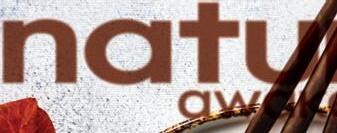














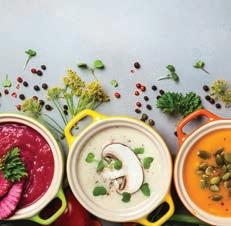


Publisher Tracy Patterson, BSc, MES
Design & Production Vegetorium, LLC
Copy Editor Sara Gurgen, MS
Digital Platforms
Carolyn Coogan Locable
Natural Awakenings – Phoenix Tracy@NaturalAZ.com NaturalAZ.com
CEO
Kimberly B. Whittle
National Editor Sandra Yeyati
Editor Brooke Goode
Copy Editor/Proofing Melanie Rankin
Layout Flip180 Media
Cover image
Anna Bogush from Getty Images/CanvaPro
© 2024 by Natural Awakenings. All rights reserved. Although some parts of this publication may be reproduced and reprinted, we require that prior permission be obtained in writing. Natural Awakenings is a free publication distributed locally and is supported by our advertisers. Please call to find a location near you or if you would like copies placed at your business. We do not necessarily endorse the views expressed in the articles and advertisements, nor are we responsible for the products and services advertised. Check with a healthcare professional regarding the appropriate use of any treatment.


As I was reading this month’s feature article on wise elders (see page 14), my mind kept returning to today’s coaching—life coaches, financial coaches, nutrition coaches, among many others. I can’t help but think about how much this evolving field reminds me of the old oral tradition, where knowledge was shared through stories and experiences, passed down from one generation to the next.
One of the present-day coaching styles is based on the unique insights we gain from personal experiences, good or bad, which help us guide others in similar situations. Whether we’ve survived extreme trauma or figured out how to bake the perfect cheesecake, we have words of wisdom that may serve others. No one has experienced something exactly the way we have, and it is in these individual differences that the real value lies. Our perspectives are often the key that unlocks understanding for someone else.
One challenge is that we don’t always believe that we have wisdom to offer. I recall asking— no, hounding—my great aunt for her stories, seeking her wisdom, and she would respond, slightly embarrassed, “Why would you be interested in that boring stuff? It isn’t important anyway.” What she considered mundane or unimportant was, to me, a gold nugget of a story. Unfortunately, I wasn’t able to root out many of those tales, and most of her adventures went untold, lost to time.
The concept of passing on our wisdom through stories is more than just a tradition—it’s a responsibility. Whether we make it a career in coaching or simply share stories with family and friends, we each hold unique experiences to pass on. And in sharing, we may find that the wisdom we thought was ordinary is exactly what someone else needed to hear.


Please note that all deadlines (advertising and editorial) are the 5th of the month prior to the edition being published. For example, November 5 is the deadline for all December edition submissions.
Small Bu siness Market

Over the Thanksgiving weekend (November 30 and December 1, from noon to 6 p.m. both days), Dimensions of Heaven and Earth, in Scottsdale, is hosting their Small Business Market, where talented local artisans will be sharing their beautiful creations to help attendees find that one-of-a-kind treasure for the loved ones on their holiday shopping list. Never-before-seen products will be introduced, and attendees will be the first people to have access to them. There will be tarot readings and reiki demos with certified practitioners available, along with raffles and prizes all weekend long, so come “shop local and connect universal.”
November is Dimensions of Gratitude Month at Dimensions of Heaven and Earth. Spending a little time in a space of gratitude each day can change how we face our daily routines. By reminding ourselves of appreciation and joy, we can adopt gratitude as a new habit when dealing with life’s challenges.
Dimensions of Heaven and Earth is committed to sharing these amazing “a-ha” moments with the community through their incredible classes, workshops and private healing sessions—all designed to help participants elevate their connections with Spirit.
Location: 11108 N. Frank Lloyd Wright Blvd., Ste. E-16 (in the Ancala Village Shopping Center). For more information about all of their events and services, visit DimensionsOfHeavenAndEarth.com, email ShopDoHE@gmail.com or call 732-832-1036. See ad, page 11.




Shea Dental is thrilled to announce the expansion of our practice with the addition of two exceptional dental professionals: Dr. David Raiffe and Dr. Emily Maslovich. We are committed to providing our patients with the highest quality care, and with the arrival of these two specialists, we continue to elevate our standards and broaden our services to meet the diverse needs of our community.

Dr. David Raiffe brings his expertise in oral surgery to Shea Dental, offering a range of specialized procedures that cater to patients with complex dental needs. His skills in advanced treatments make him a vital addition to our team. Dr. Raiffe specializes in:
• Z irconia Implants: These metal-free, biocompatible dental implants offer a strong, long-lasting solution for patients seeking a more natural and aesthetic option for tooth replacement.
• Extractions of Failing Root Canal Teeth: For patients experiencing complications or infections related to past root canal treatments, Dr. Raiffe provides precise extractions to alleviate discomfort and prevent further issues.
• PRF Treatment: Platelet-rich fibrin (PRF) therapy is a cutting-edge treatment that uses the patient’s own blood to accelerate healing and promote tissue regeneration after surgery.
• Cavitation Surgery: This specialized procedure addresses hidden infections in the jawbone that can impact overall health.
• Wisdom Teeth Removal: Dr. Raiffe’s expertise in oral surgery ensures safe and efficient extraction of wisdom teeth, with a focus on minimizing discomfort and speeding recovery.
• Ozone Saline Rinses: Dr. Raiffe incorporates ozone therapy in his treatments, using ozone-infused saline to disinfect and promote healing during and after dental procedures.
Dr. Raiffe’s comprehensive approach to oral surgery emphasizes patient comfort and longterm oral health, making him a valuable resource for patients in need of specialized care.
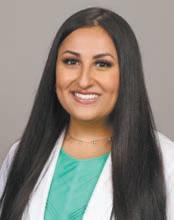
Dr. Emily Maslovich is a highly skilled pediatric dentist, dedicated to creating positive dental experiences for children and promoting their long-term oral health. She focuses on preventive and restorative treatments tailored to young patients, helping ensure that children grow up with strong, healthy smiles. Dr. Maslovich specializes in:
• Metal-Free White Crowns for Children: These aesthetic, durable crowns provide a natural-looking solution for restoring decayed or damaged teeth without the use of metal.
• Tongue Tie Treatments: Dr. Maslovich offers precise, gentle procedures to correct
tongue ties, helping improve speech, feeding and overall oral development in young patients.
• Airway and Breathing Treatments: Focusing on airway health, Dr. Maslovich works to address issues related to sleep-disordered breathing in children, ensuring their breathing patterns support healthy growth and development.
• White Fillings: For children requiring cavity treatment, Dr. Maslovich uses white fillings that blend seamlessly with their natural teeth.
• HealthyStart Appliances: These orthodontic devices promote natural airway expansion, guiding proper oral development and reducing the need for braces later in life.
With Dr. Maslovich’s compassionate and patient-focused approach, parents can feel confident that their children are receiving top-notch dental care in a nurturing environment.
At Shea Dental, we are excited to welcome these two talented dentists to our practice. Dr. Raiffe and Dr. Maslovich bring a wealth of knowledge, experience and a passion for delivering exceptional dental care. Whether you’re in need of advanced oral surgery or pediatric dental services, our team is here to help you and your family achieve optimal oral health.
To schedule an appointment with Dr. Raiffe or Dr. Maslovich, call Shea Dental at 480998-3923 or visit SheaDentalAZ.com. See ad, pages 5 and 20-21.
Advertorial
Fractures of the upper end of the humerus, or upper arm bone, that connects to the shoulder joint are the third-most common fractures among the elderly. In a case report published in Integrative Medicine Reports, a 53-year-old patient with multiple fractures of the humerus selected homeopathy rather than surgery to repair the fractures, which consisted of keeping the arm and shoulder immobilized and daily doses of a homeopathic anti-inflammatory made from the roots and leaves of Symphytum officinale, commonly referred to as the comfrey plant.
After two weeks, a follow-up X-ray showed the first signs of healing, and the patient reported a reduction of pain. After three weeks, the fracture had consolidated, and the patient was advised to start gentle movement of the arm. The final X-ray after six weeks of homeopathic treatment showed the fracture had healed.


According to a study published in JAMA Network Open, Brazilian scientists discovered microplastics in the olfactory bulb, a rounded structure of the brain above each nasal cavity that receives information from the nose and relays it to the brain. Upon analyzing samples of olfactory bulb tissue from 15 deceased individuals, the researchers found tiny microplastics in eight of them, including polypropylene, polyamide, nylon and polyethylene vinyl acetate. Whether these plastics can reach the brain through the olfactory bulb is not clear, but the potential is worrying. While microplastics have been found in the bloodstream and other tissue, their presence in the human brain has not yet been documented.


The hospice industry is witnessing a surge in environmental sustainability efforts. Providers like Agrace Hospice & Supportive Care and Amedisys, Inc. are making strides toward long-term ecological responsibility. Despite the need for initial investments, hospices anticipate cost savings from reduced energy consumption and enhanced staff recruitment and retention. Agrace aims to achieve carbon neutrality by 2025 by investing in renewable energy sources and transitioning to electric vehicles. Similarly, Amedisys has plans to reach net zero greenhouse gas emissions by 2050. Other examples, like Hospice of the Western Reserve, demonstrate the ripple effects of sustainability initiatives on the community, aligning with the mission to promote quality of life and leave a lasting legacy for future generations.

A country needs an average birth rate of 2.1 children per family to naturally replace its population. According to the latest 2022 World Bank Group data, the U.S. birth rate is 1.7, the European Union is at 1.5 and China is at 1.2. Among wealthy countries, South Korea has the lowest birthrate at less than 0.8. In a recent survey, one in two South Korean women of child-bearing age said they had no intention of having children. While the number of children is falling, the number of dogs has doubled since 2018 in South Korea. The sale of dog strollers has quadrupled since 2019, and their sale now exceeds the sale of baby strollers. The drop in the birthrate prompted President Yoon to declare a “demographic national emergency” and called on the government to help avoid an “existential crisis”.
Karissa Lear, an aquatic ecologist at Australia’s Murdoch University, observed that a long jetty and rock wall built for a marine loading facility disrupted the migration patterns of young green sawfish in Western Australia. Afraid of predators, these juvenile fish were unable or unwilling to swim around the manmade barrier to get from their shallow nursery to essential feeding grounds. Lear believes that marine animals need a hand in getting around human infrastructure, much like wildlife-crossing bridges help animals cross highways and fish ladders help salmon bypass dams on their way to spawn. Modifications to the design and construction of infrastructure are needed to ensure the sustainability of our oceans.


For much of the country, autumn is a wonderful season of falling temperatures and the changing colors of leaves in nature’s last hurrah. Celebrate this Thanksgiving with eco-friendly, handmade decorations that commemorate the season and honor our living planet.
Welcome guests to the house with a wreath that can last for years. Collect acorns from the yard or purchase them from a craft shop. Using a glue gun, randomly affix the acorns one at a time around a 12-inch grapevine wreath, ensuring even coverage. Allow the glue to dry completely before moving. Add a bow by cutting burlap or another festive cloth into a 4-by-20-inch strip. Fold the strip lengthwise and add double-sided tape to hold the ends together. Pinch the middle of the strip and wrap it with a separate 2-by5-inch burlap strip, then glue it in place on the wreath.
To add a wonderful, sweet smell to the house, use a bamboo skewer to poke holes in an apple and stick cloves, stem first, into the holes. To ensure the apple will last, the cloves must be fairly close together but do not need to touch. Once the apple is covered in cloves, tie twine or ribbon to the stem for added pizzazz.
Giving and receiving thanks is good for the body and soul, and these place cards are a great way to introduce gratitude around the Thanksgiving table. Cut scrap card stock into 2-by-3-inch pieces and write a guest’s name on the front. With a serrated knife,
slice off one quarter of a wine bottle cork lengthwise so it can lie flat on the table. Make a cut about halfway through on the rounded side and slide a place card into the cut. Encourage guests to flip over their card and write down what they are thankful for. When everyone is done, ask them to share their gratitude with the table.
Get the kids in the holiday spirit with this fun project. First, gather the supplies: a new tablecloth, assorted fabric paints, paintbrushes and fabric pens. Paint a child’s palm and fingers, then help them press their hand firmly onto the tablecloth to make an imprint. Slowly peel their hand off the tablecloth to prevent smudges. Using a fabric pen, add an eye, wattle and feet to the hand turkey. Write the child’s name and the year next to their imprint. Fill the tablecloth over time to see how their hands grow and remind the family of their blessings.

by Carrie Jackson
With knowledge that extends beyond any classroom and humility that provokes a familiar kinship, wise elders have been the pillars of communities for millennia. Their nurturing energy, loving warmth and eternal wisdom provide a foundation for learning and growth. By harnessing a connection to nature, reframing cultural roles and cultivating grace and selfcare, we all have the capacity to embody the role of a wise elder in our own way.
Nature’s Lessons
“Wise elders are repositories of how to live a good life within nature, and not against
it. They are able to perceive and act according to the bigger picture and see the impact of actions now on future generations,” says Dr. Darcia Narvaez, professor of psychology emerita at the University of Notre Dame, president of the nonprofit Kindred World and founder of its initiative, The Evolved Nest.
In her book, The Evolved Nest: Nature’s Way of Raising Children and Creating Connected Communities, Narvaez and co-author G.A. Bradshaw, Ph.D., examine how we can restore natural wellness in our families and communities by living in harmony with
nature. She points to the idea of “nestedness” as an inspiration for reexamining our own systems of nurturing, understanding and caring for our young and one another.
“A wise elder is one who is deeply nested. They display horizontal nestedness in that they attend to honoring ancestral wisdom and to living for the well-being of future generations. They display vertical nestedness in that they honor and live with Earth’s cycles and nature’s laws, but also feel connected to and confident in the cosmos,” Narvaez explains.
Instead of teaching, wise elders act as guides and model behavior for others. “Wise elders know everyone’s path is unique, and everyone has a gift to uncover, develop and share with the community,” advises Narvaez. “They encourage us toward love and openness, instead of bracing against change. They inspire us to work through our fears and know that words matter. It is easy to discourage the spiritual development of others with words. Stories provide an invitation, instead of persuasion or coercion.”

This wisdom often comes from lessons they have embraced when facing challenges. “It’s not that wise elders are naive livers of life. They are scarred. To become self-actualized, one must accept suffering and learn from it,” she says.
At the same time, they acknowledge that every moment is a gift and live life to the fullest. “Wise elders know enjoyment and want others to experience it, too, whether it’s ice cream, cookies or a sunset. After all, if you are not experiencing foundational joy in your life, something is quite wrong,” asserts Narvaez.
A wise elder’s connection with nature is deeply rooted—grounded by the land and inspired by the promise of cultivation. “Seeds are our 400 million-year-old ancestors and elders. Gardens grow us more than we grow them. They nod and bow to seeds; and gardens as teachers are gardens as elders,” says Petra Page-Mann, coowner of Fruition Seeds, a farm in Naples, New York, that grows and shares regionally adapted seeds.
Founded in 2012, Fruition Seeds is rooted in the idea that each seed, like each of us, is meant to change the world. In August 2024, they shifted from seed sales to sharing seeds as an embodied gift practice, honoring the co-owners’ desire to respect the seeds and practice reciprocity. “This move deliberately mirrors and honors what the seeds are teaching us,” Page-Mann explains. “They are gifts to the Earth, as we all are, and not ours to buy and sell. It’s a way to practice remembering and reimagining a culture of care and belonging. We are rehydrating our relationship with seeds and the land and moving away from a transactional being to an open place of giving and receiving.”
Page-Mann says, “I think of an elder as someone who inspires, challenges, uplifts and comforts. They are people who can accompany us into our challenges and through them, and not just try to fix problems. I see
our relationship to wise elders in the way a river flows and changes on a whim. Sometimes it flows quickly, and at other times it moves smoothly and slowly. There might be rocks under the surface or waterfalls and dams along the way. At any moment in our lives, we experience different elements of that river. The river holds us as elders do: always present, offering diverse forms of medicine. There might be a lightning bolt of wisdom or awareness, followed by a cascade of insight. Other times, it’s just sweet meandering; but we don’t need to paddle or swim because we are held by their flow.”
Wise elders teach us that by leaning into challenges, we can reframe the risks associated with growth. “If we are in our comfort zone, we are safe, and if we are in our panic zone, we are not safe. There’s a discomfort in between. Wise elders are constantly
extending their comfort zones and window of tolerance a little wider, so they can move and breathe more freely in that space,” says Page-Mann.
Although anyone can step into elderhood, Page-Mann believes that society needs to reframe its priorities in order to nurture the process. “We don’t have a cohesive cultural fabric for the role of a wise elder,” she points out. “It’s a capitalist and supremacy culture not grounded in love and belonging. Elders have been eroded from our lives. We’re all really shrunken, disconnected versions of ourselves.”
By challenging current priorities and shifting back to the organic flow of the Earth, we can embrace and embody the traits we seek and become role models and guides for others. “There is a natural progression of maturation where we play different roles in the community and can accompany each

of why certain foods are healthy, where to get them and how to prepare them. Request a free copy of our 28-page booklet about Dr. Weston

and more. Use code NA30
other with those roles. If we are held in a cohesive cultural fabric of love and belonging, we can step into whatever role is calling us,” Page-Mann asserts.
While wise elders are generous with their time and attention, they value staying grounded. Cheryl Richardson, the Massachusetts-based author of Self-Care for the Wisdom Years: Practical Ways to Celebrate the Mystery and Wonder of Aging, says that doing inner work allows elders to become more available for others. “Wise elders are full of life, steeped in gratitude, eager and excited for new adventures, and able to respond to anything placed before them with wisdom and grace,” she says. “They face aging and mortality with open eyes and a curious heart. They are self-reflective, committed to personal growth and anxious to invest time and energy into their inner lives. They are also happy to share what they’ve learned about life and aging with others. They make their greatest contribution to society by being a powerful example of what it means to embrace aging and the wisdom it provides.”
According to Richardson, “Wise elders see aging as a gift and an opportunity to learn about themselves in new and different ways. They are able to step back, take a deep breath and check their reactions before responding to life’s challenges. They consciously cultivate patience and self-reflection when faced with adversity. The wisdom years are an excellent time to challenge the voices that cling to old ways of life. It’s an opportunity

to focus less on where you should be and more on where you are and what your soul wants. That’s when the magic of the moment sweeps you off your feet.”
At a time when we are living longer than ever, Richardson sees an opportunity to maximize our later years. “Now that longevity affords us a second adult life, we have time to evolve even more before we die. When people age consciously and prioritize their emotional and physical health, inner life, intimate connections with others and managing their minds, they age with far less fear and much more aliveness, peace and emotional freedom,” she explains.
Wise elders are in tune with their own capacity and availability, and they understand

the importance of setting limits. “The gift of mortality is that it makes it easier to say no to those things that are no longer important. Therefore, boundary-setting becomes easier,” Rchardson says. “When you know you have limited time left, you are passionate about spending it wisely. Wise elders have a unique ability to let go of responsibilities that are no longer theirs, and to make space and sit with it. They know when enough is enough and can set firm, loving boundaries. Cultivating these capabilities will not only help us make the most out of our remaining years, but they’ll also mold us into the kind of wise elders so many of us wish we had growing up.”
Carrie Jackson is a Chicago-based freelance writer and frequent contributor to Natural Awakenings. Connect at CarrieJackson Writes.com.

by Marlaina Donato
With the season of gratitude comes an annual flurry of festivities. Many of us feel obligated to show up at the table when we might prefer retreating into a corner of solitude. Finding a shred of gratitude may feel like an obligatory or even impossible feat if we are buckling beneath the weight of personal problems. Well-meaning loved ones might point out the blessings in our lives, and it is easy to be snared into feeling guilty if we cannot appreciate the good.
Being thankful for crumbs when we have been denied a feast might seem a task reserved for saints, but simply having faith in an hour of plenty that is yet to come can soften the sharp edge of our hunger. Feeling gratitude for bounty that has not yet arrived, and for all that is on its way to us in its rightful season, provides us with an opportunity to see the light beyond the shadow. According to the Buddhist proverb, “Enough is a feast.”
Seeing “enough” on the table, in the mirror, in each other and in each day is a spiritual practice worth cultivating. Reaching beyond our comfort zone by loving others when we do not feel loved or supporting someone else when we feel less-than can bring us closer to all that is slightly out of reach. Taking time to

observe nature’s complex patterns—fractals within flowers, textures of trees or the edible geometry of a cauliflower—reminds us that we, too, are part of the universal order.
Finding fragments of beauty along the wayside—a child’s pure laugh, the drop of sweet honey left on the spoon or a bird’s wing reflecting the morning light—invites us to look beyond the chaotic, current chapter to see the bigger story. Choosing to remember that all chapters come to a close can help us decide what we want to write in the next one.
Marlaina Donato is an author, composer and painter. Connect at BluefireStudio.art.
Feeling gratitude for bounty that has not yet arrived, and for all that is on its way to us in its rightful season, provides us with an opportunity to see the light beyond the shadow.


by Kristen Graham, DDS

Neglecting regular oral care can lead to chronic and long-term diseases. Recent research has even linked poor oral health and hygiene to the development and progression of Type 2 diabetes, which can contribute to Alzheimer’s disease later in life. Maintaining optimal oral health is a cornerstone to overall health and longevity. The mouth serves as the gateway to the body and a reflection of our overall well-being. The condition of the mouth provides insight into general health, and proper care can have farreaching impacts on systemic health and longevity.
This article explores the critical role oral care plays in maintaining optimal health and its relationship to systemic conditions, specifically Type 2 diabetes and Alzheimer’s disease. As a biological dentist, it is important for me to address the root causes and
such as Type 2 diabetes. Research has shown that patients with periodontal disease have a higher risk of insulin resistance, a hallmark indicator of Type 2 diabetes. We must consider oral health as a long-term commitment to overall well-being and prevention of chronic diseases.
deagreez/123rf.com
understand the connections between oral health and systemic health, highlighting the importance of caring for teeth and gums through every decade of life.
The mouth is a window to the body, and foundational health begins here. Brushing twice daily and regular flossing prevent tooth decay, tooth loss and periodontal disease. Furthermore, these practices prevent the spread of harmful bacteria that can enter the bloodstream and cause downstream effects. Once bacteria are in the bloodstream, they can cause systemic inflammation, triggering a cascade of events in the human body.
Periodontal disease is one of the most common long-term inflammatory conditions worldwide. The same inflammation that causes gum disease also contributes to systemic chronic inflammatory conditions,
Studies show that individuals with gum disease are at a higher risk of developing diabetes. Additionally, poorly managed diabetes can exacerbate gum disease, creating a vicious cycle where each condition worsens the other. Diabetic patients are more vulnerable to infections, including those in the mouth and gums, due to a compromised immune system. Chronic high blood sugar also reduces salivary flow, leading to dry mouth, which fosters an increase in harmful bacteria.
Diabetes also affects the tiny blood vessels that supply the gums, reducing blood supply and limiting the body’s ability to heal tissue, which can make gum disease more severe. By treating periodontal disease, patients can improve blood sugar levels, highlighting the need for proper oral health care as part of a holistic diabetic maintenance program.
Alzheimer’s disease is increasingly recognized as “Type 3 diabetes.” The connection between Type 2 and Type 3 diabetes is becoming better understood. Both conditions have common factors, including insulin resistance, chronic inflammation and oxidative stress, all of which damage the brain over time. Individuals with Type 2 diabetes are twice as likely to develop Alzheimer’s as those without. While the exact mechanisms are still under research, there are clear associations between insulin resistance, brain
health and cognitive decline. Insulin plays a critical role in memory formation and neural health. When brain cells become resistant to insulin, cognitive functions like memory and reasoning begin to decline, leading to the onset of Alzheimer’s and other forms of dementia.
Chronic inflammation is a key driver of neurodegeneration, which can be exacerbated by oral infections and certain bacteria in the mouth. Porphyromonas gingivalis, which contributes to periodontal disease, has been found inside the brains of patients with Alzheimer’s disease. This research suggests a potential correlation between oral infections and neurodegeneration.
In conclusion, taking good care of teeth and gums can positively influence systemic health. Regular dental exams, cleanings and addressing infections should be central to optimizing health, promoting wellness and integrating systemic wellness to enhance longevity while protecting against accelerated aging, chronic diseases and neurodegeneration.

Dr. Kristen Graham graduated from the University of Maryland School of Dentistry in 2013. She is a member of the International Academy of Oral Medicine and Toxicology (SMART certified in safe mercury removal) and achieved her naturopathic dentist certification with the American College of Integrative Medicine and Dentistry in 2017. Graham is very passionate about holistic approaches and getting to the root of the symptoms. She has a heart for helping children and adults. She is also currently on the board of Children’s Health Defense AZ chapter. In her free time, she loves to be in nature, in fellowship or spending time with her family. To schedule an appointment with Graham, call Natural Dental Partners (located at 6930 E. Chauncey Ln., Ste. 100, in Phoenix) at 602-775-5120. For more information on services offered, visit MyNaturalDentist.com and ABreathOfHealth.com. See ad, pages 3 and 35.
Advertorial




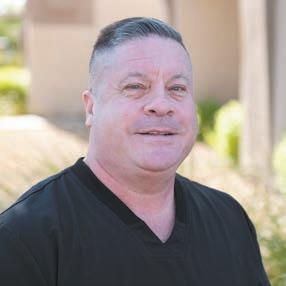



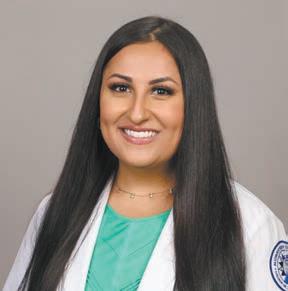

by Deborah Bevilacqua
Many consumers are taking personal action to benefit the environment, such as reducing consumption, altering eating practices and modifying travel. In response to consumer demand, technology and product companies are creating new offerings to reduce carbon footprints, protect the planet and safeguard the environment for future generations. Here is a look at some of those products and technologies.
Dryer Balls: When dropped into the dryer, these spiky rubber balls separate clothes to expedite drying and keep them soft. Because they are reusable, they save money and replace the need for dryer sheets that are made from non-woven polyester and coated with liquid softeners, fragrance and, in some cases, volatile organic compounds. Eliminating dryer-sheet use reduces the release of microplastics and waste to landfills and waterways.
Hand-Powered Shredders: With a twist of the wrist, documents containing confidential and personal information can be destroyed while conserving energy.
Smart Control Plugs: According to Honeywell, about 25 percent of energy usage in a building comes from plugged-in electronics that sap energy when not in use. Smart plugs and power strips can detect when a pluggedin device is not in use and shut off its power or can be set to turn off using a timer, saving energy and money. They also provide energy monitoring features that allow users to
track their energy consumption and identify high-energy-consuming devices.
Solar-Powered Device Chargers: Solar power used in portable chargers provides energy on the go. It also can be built into devices such as wireless speakers, laptop computer cases and other small electronics, eliminating the need to plug a charger into an outlet or use disposable batteries.
Green Navigation: Global positioning systems (GPS) units are being upgraded to not only help drivers get from point A to B and avoid traffic, but also to provide the most fuel-efficient routes.
Smart Thermostats: These devices allow home or office temperatures to be set remotely from a smartphone app that tracks user preferences and energy usage, allowing people to reduce their heating and cooling bills. Smart thermostat producer ecobee estimates that its products save more than 26 percent on energy costs compared to simply setting a fixed temperature of 72° F.
Solar Water Heaters: While initially more costly to purchase and install, solar water heating systems can benefit the planet and the pocketbook for years. The U.S. Department of Energy estimates that they can


reduce water heating bills by 50 to 80 percent and protect homeowners from fuel shortages and price hikes.
Green Living Apps: A growing list of phone apps help people live more sustainably, such as Too Good To Go and Olio for sharing surplus food; the Ecosia search engine that applies a portion of their profits to planting trees; Ailuna and AWorld, which help users form longlasting eco-friendly habits; and HappyCow to locate vegetarian and vegan restaurants.
Water Monitors: The U.S. Environmental Protection Agency estimates that undetected water leaks in the average household waste approximately 10,000 gallons of water annually. Installing a water monitoring system uses ultrasonic sensors to find leaks.
Energy-Saving Televisions: ENERGY STAR certification is not just for refrigerators and dryers. These TVs are 25 percent more efficient than conventional models and include the industry’s most popular features.
Greener Smartphones: Although obligatory in today’s world, smartphones come with an environmental cost. When upgrading to the next model, look for brands that use recycled materials, support responsible mining, and recycle and repair their products.
Electric Transportation: Using electric bikes and scooters around town reduces the need for cars and public transportation, and reduces traffic congestion and pollution. Remember to wear a helmet while operating these zero-emission alternatives that cut costs and the rider’s carbon footprint.
Kitchen Composter: The U.S. Department of Agriculture estimates food loss and waste at the retail and consumer levels to be more than 30 percent. Kitchen composters turn that waste into nutrient-rich compost for the garden by grinding and drying it. These appli ances use activated charcoal filters to eliminate odors and sensors to monitor temperature, moisture and oxygen levels to optimize microbial activity and decomposition.




Therasage is the gold standard for energy healing, naturally healing infrared, negative ions and eliminating EMFs.
Therasage.com
Scan to register for educational webcast to learn more.


A NEW fun and interactive series dedicated to the health and well-being of Preschoolers and their families.
WORLD MUSIC, MOVEMENT, MINDFULNESS, CREATIVE PLAY, TIME IN NATURE & POWER OF THE HEART! SUBSCRIBE today!
Scan to learn more and subscribe.


Founded in 1932, Boiron, the world leader in homeopathic medicines, is best known for its popular Arnicare® line of pain relievers and Oscillococcinum® flu reliever.
BoironUSA.com
Save 20% with code NA20

Deborah Bevilacqua is a regular contributor to Natural Awakenings.


OB/GYN-formulated Rejuvenates vaginal tissue, restores natural moisture, and helps prevent bladder leaks.
DrAnnaCabeca.com/ products/julva


by Marlaina Donato
Whether we showcase winter’s root vegetables or come home to comfort food simmering on the stove, soup is a language of love with many dialects: from underthe-weather broths and velvety bisques to slow-cooked stews and stick-to-the-ribs chowders. A bowl of soup can bridge the mundane and the magical, inviting us to slow our fast-paced lives, share the bounty with loved ones and honor recipes of generations past.
“Every time I make soup, even if it’s one I’ve made over and over, it fills me with a sense of wonder that a bunch of disparate ingredients—legumes, grains, raw vegetables, onions, garlic, seasonings—always meld in a way that seems almost miraculous,” marvels Nava Atlas, the Hudson Valley, New York-based author of more than 10 cookbooks, including Vegan Soups and Stews for all Seasons.
Eating seasonally can help our bodies transition into winter, and soups that incorporate cold-weather crops offer delicious versatility. “Thanksgiving is traditionally a time to be thankful for the harvest. Soups in the fall are typically a hearty mix of what you may have grown in your garden. These could be rich and creamy tomato, pumpkin or pea soups,” says Sharon Hapton, founder and CEO of nonprofit Soup Sisters, a food-assistance program in 27 cities across Canada. The author of The Soup Sisters and Broth Brothers Cookbook attests that taking
a little time to make soup “is a great way to nourish our spirits and reconnect with the food.”
In any combination, rainbow carrots, rutabaga, parsnips, leafy greens, sweet potatoes, mushrooms, leeks and winter squashes pack a punch in flavor, color and texture. Special-occasion soups can be simple childhood favorites dressed up with the pungent tastes of sage, rosemary, ginger, chiles or coriander seeds. Creamy soups, whether traditional or vegan, pair beautifully with wild rice, roasted pumpkin seeds or toasted pecans. Atlas suggests combining vegetables in surprising ways to take advantage of contrasting flavors, such as adding sweet potatoes and bell peppers to a black bean stew.
Although broths and stocks can be made using vegetables and/or bones and seasoned with salt and pepper, a broth is thinner in consistency and requires a shorter simmering time, whereas a stock can be simmered for four to six hours, resulting in a heavier texture. Nutritional bone broth is usually simmered for 12 to 36 hours to create a collagen-rich stock. All of these can be sipped for a soothing repast or incorporated into other recipes.
Atlas notes, “Most soups benefit from judicious salting to bring out the flavors, but I suggest waiting until the end to add salt, giving the soup time to develop flavor first.
And it’s surprising how much of a lift lemon and lime juice can give to soup broth.” For those monitoring their sodium, she recommends salt-free seasoning blends, like Dash, or Spike, a zesty low-sodium option found at health food stores.
Holiday time can be bittersweet, especially when lost family members are not at the table, but taking out an old, handed-down recipe is a wonderful way to preserve culinary customs and commemorate the family’s heritage. “Creating delicious food like soup from a loved one’s recipe is more than the ingredient list on a card,” says Hapton. “Use the silver spoon handed down from family to stir the love and rekindle the memories of loved ones. A natural flow of storytelling happens when we cook together, and the ‘dash of this and that’ can make its own lively conversation.”
According to Atlas, “Food traditions are a way to embrace each person’s unique history—where their ancestors were from, what was available to them, what they felt comforted by. Yet, despite all the different traditions, food is a great uniter, a fantastic way to connect us as humans.”
Presenting soup in an elegant tureen and putting out toppings such as chopped fragrant herbs or crushed pink peppercorns at each place setting gives soup a festive, gourmet touch. “Don’t wait for a special occasion to bring out the good dinnerware,” Hapton suggests. “Enjoy it every day, even in some small way.”
Ultimately, gratitude is the most important ingredient. This Thanksgiving, invite each guest at the table to ladle a bowl of soup for the person next to them, offering a single word of appreciation as a form of grace.
Marlaina Donato is an author, composer and painter. Connect at BluefireStudio.art.




This vegan version of Brazil’s famous national dish, feijoada, is an abundantly nourishing stew. Optional embellishments include steamed fresh greens and slices of mango and/or papaya.
YIELD:
FOR THE RICE
1 cup tomato juice or tomato sauce
3 cups water
1½ cups raw brown rice, rinsed
1 Tbsp olive oil
1 large onion, chopped
2 cloves garlic, minced
2 medium sweet potatoes, peeled and diced
1½ cups water
3 to 3½ cups black beans, cooked, or 2 15-oz cans, drained and rinsed
1 medium red bell pepper, cut into short, narrow strips
1 medium green or yellow bell pepper, cut into short, narrow strips
1 cup diced tomatoes
2 small fresh hot green chili peppers, seeded and thinly sliced, divided
1½ tsp ground cumin
½ tsp dried thyme
½ cup chopped fresh parsley or cilantro
Salt and freshly ground pepper to taste
For the rice, combine the tomato juice with the water in a large saucepan and bring to a slow boil. Add the rice, then lower the heat and simmer gently with the cover ajar until all the liquid is absorbed and the rice is tender, about 30 minutes. Cover and set the cooked rice aside.
For the stew, heat the oil in a large soup pot. Add the onion and sauté over medium-low heat until translucent. Add the garlic and continue to sauté until both are golden. Stir in the sweet potatoes and water. Bring stew to a slow boil, then lower the heat. Simmer gently over low heat with the cover ajar until the sweet potatoes are just tender but still firm, about 10 to 15 minutes.
Add the beans, bell peppers, tomatoes, one of the chili peppers, cumin and thyme. Simmer gently for 10 to 15 minutes longer, uncovered. The stew should have the consistency of a thick chili. Add a bit more water if it is too thick.

Stir in half of the parsley and season with salt and pepper. Serve over the hot cooked rice in shallow bowls and garnish each serving with a little extra parsley and a few slices of the reserved chili pepper.
Recipe and image courtesy of Nava Atlas.
Subtly spiced with a colorful garnish, this warming soup tempts the eye with an appealing golden color and pleases the palate with the delectable flavor of sweet potatoes.
2 Tbsp olive oil
2 medium onions, chopped
2 medium carrots, peeled and diced
1 large celery stalk, diced
A handful of celery leaves
3 to 4 medium-large sweet potatoes, peeled and diced (about 6 cups)
1 tsp ground cumin
½ tsp dried thyme
¼ tsp ground nutmeg
1½ cups unsweetened plant-based milk, or as needed
½ lime, juiced
½ lime, sliced thinly for garnish
Salt and freshly ground pepper to taste
1 Tbsp olive oil
6 kale leaves, preferably lacinato, stemmed and thinly sliced
1½ cups fresh or frozen (thawed) corn kernels
2 scallions, thinly sliced
¼ cup cilantro leaves
Heat the oil in a soup pot. Add the onions, carrots and celery, and sauté over medium-low heat until all are golden.
Add the celery leaves and diced sweet potato. Add just enough water to cover all but about an inch of the vegetables. Bring to a slow boil. Stir in the cumin, thyme and nutmeg, then lower the heat. Simmer gently over low heat with the cover ajar until the sweet potatoes and vegetables are tender, about 20 to 25 minutes.
Transfer the solid ingredients from the soup pot to a food processor or blender with about 1 cup of the cooking liquid. Process until smoothly pureed (or leave a bit chunky), then stir back into the soup pot. Alternatively, skip the food processor and insert an immersion blender into the pot and blend the soup until pureed to preferred consistency.

Add enough plant-based milk to give the soup a slightly thick consistency. Stir in the lime juice and season with salt and pepper. Simmer over low heat for 10 minutes longer.
For the topping, heat the oil in a medium skillet. Add the kale and sauté until wilted, about 2 to 3 minutes. Add the corn and sauté for 2 to 3 minutes longer. Add the scallions and sauté for another minute. Stir in the cilantro and remove from the heat. Mound a little of this topping mixture on each serving of soup, along with a thin slice or two of fresh lime.
Recipe is from Vegan Soups and Stews for All Seasons (5th edition) by Nava Atlas. Photo by Hannah Kaminsky © 2024 Amberwood Press, reprinted by permission.
YIELD: 4 SERVINGS
¼ cup butter
2 Gala apples, peeled, cored and diced
2 cups parsnips, peeled and diced
½ large onion, finely chopped
2 Tbsp shallots, finely chopped
2 Tbsp roasted red pepper, minced
1 Tbsp roasted garlic, minced
1½ tsp fresh ginger, peeled and grated
½ tsp ground allspice
¼ tsp dried thyme
2½ cups chicken stock
1 cup whipping cream with 35 percent milk fat
½ cup dry vermouth
½ cup olive oil
Juice of 1 lemon
1 chorizo sausage, uncooked, casing removed
1 tsp sea salt
1 tsp pepper
In a large pot, melt the butter over medium heat. Add apples, onion, shallots, red pepper, garlic, ginger, allspice and thyme. Cook, stirring often, until the onion has softened.
Add the stock and cream and bring to a boil. Reduce the heat and simmer, covered, until the apples and parsnips are tender, about 20 minutes.
Transfer the soup ingredients to a food processor or blender and puree until smooth. Return soup to the pot and add vermouth, olive oil and lemon juice. Reheat gently.
Meanwhile, crumble the chorizo sausage in a small skillet. Cook, stirring often, over medium heat until the sausage is cooked through. Drain on paper towels. Season with salt and pepper to taste.
Ladle the soup into bowls and scatter the chorizo over the top.
Recipe by chef Liana Robberecht and photo by Julie Van Rosendaal from The Soup Sisters and Broth Brothers Cookbook published by Appetite by Random House, used with permission.

by Maya Whitman
Adequate cardiovascular and lymphatic circulation is key for all matters of well-being, including heart health, wound healing, fluid balance and muscle recovery after a workout. To address circulation issues, the advent of compression therapy began as early as 1950 with the invention of compression socks by German engineer and varicose vein sufferer Conrad Jobst. Today, the use of compression gear in the form of boots, leggings, sleeves, bandages, wraps and suits
is surging in athletics, as well as physical therapy. In medical settings, the Cleveland Clinic recommends the use of compression bandages, stockings and inflatable wraps to treat swelling and pain in patients experiencing the poor circulation that is often associated with conditions ranging from pregnancy to diabetes and congestive heart failure.
According to market research company SNS Insider, the global compression

Sergey Ryzhov /Shutterstock
therapy market—driven not only by athletic demand but also by the rising occurrence of diabetes, lymphedema, varicose veins and deep vein thrombosis in an aging population—is predicted to expand to $7.86 billion by 2032.
The lymphatic system is a network of organs, vessels and tissues that work in conjunction with the circulatory system to maintain healthy fluid levels, filter out waste products and abnormal cells, help the body absorb fats and support the immune system. “It is like the body’s waste-water treatment system,” explains Brittany Curwen, a certified lymphedema therapist and registered occupational therapist at Therapy Achievements, in Decatur, Alabama. “Compression helps keep the right amount of pressure on the blood vessels to make sure the valves inside the veins work in one direction, so blood and lymphatic fluid gets where it needs to go.”
Inflammatory response is normal during the healing process, but when the lymph vessels are unable to drain, lymph fluid in an arm, leg or other body part may cause painful swelling called lymphedema. This condition is commonly caused by cancer, radiation treatments, surgery and, in developing countries, parasites. “After surgery, a light elastic compression garment worn
during the daytime hours can help [treat lymphedema]. For someone without a history of lymphedema, a garment that applies 10 to 15 millimeters of mercury (mmHg) of pressure can help. These are often found at drugstores or online,” says Curwen, noting that such garments can be worn for several weeks during waking hours until the swelling subsides and normal activity is resumed. “For someone with more severe swelling, a medical-grade garment is essential to prevent the lymphedema from progressing and causing changes in the skin texture. A medical-grade garment should be prescribed by a physician.”
Swelling is a common occurrence when diabetes is accompanied by other diseases that impact circulation, such as cardiovascular disease or kidney disease, which can promote pooling of fluid in the legs and feet. A 2023 meta-review published in International Wound Journal found sustained graduated compression to be useful in healing diabetic-related leg sores from pooled blood.
While hitting the gym or going for a long hike does a body good, most people want to avoid post-workout discomfort, and that is where compression clothing can help. By
applying pressure to specific body parts, this clothing improves circulation and ultimately supports muscle recovery. “After intense physical activity, lactic acid is produced as a byproduct of anaerobic respiration, which occurs when your muscles need more energy than your body can supply through oxygen alone,” explains Tabitha Eaves, owner of Rise Up Wellness, in Bloomfield,
mostly endurance athletes—predominately runners—reported that compression garments were worn on their lower extremities to prevent injury or reduce symptoms of a current injury, and users perceived a faster post-exercise recovery (more than 80 percent), as well as improved sports performance (more than 70 percent).
Eaves specializes in Normatec compression therapy, which uses air to apply pressure to a body part, thereby mimicking a natural muscle-pump action. She suggests that this type of pneumatic compression typically can be used three to four times a week. Some athletes employ it daily, especially during periods of intense training. She adds, “Post-therapy, most users report feeling relaxed, with some experiencing a slight tingling sensation as circulation increases.”
Michigan. “Lactic acid buildup can lead to muscle fatigue and soreness during and after exercise. The recovery process involves the body clearing out this lactic acid and other metabolic waste products, which helps to reduce muscle soreness, inflammation and swelling, speeding up the overall recovery time.”
While compression therapy is generally safe for most people, Curwen cautions anyone with peripheral artery disease, congestive heart failure, advanced kidney disease or unmanaged high blood pressure to obtain a physician’s approval before using compression therapy or compression garments.
Maya Whitman is a regular contributor to Natural Awakenings.

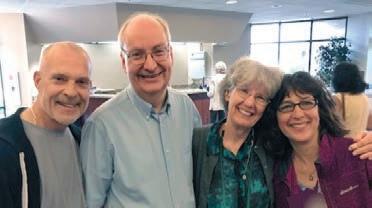

by Christina Connors
American adults are feeling increasingly troubled. According to a 2024 American Psychiatric Association poll, approximately 43 percent of respondents say they are more anxious now than in previous years (up from 32 percent in 2022), with current events like the economy, elections and gun violence driving 70 percent of worries.
As is often the case, children can be affected by the emotional state of adults in their lives. A 2022 meta-analysis published in the Journal of Anxiety Disorders reported that children
of anxious parents are at higher risk of developing anxiety disorders and twice as likely to have anxiety problems than children of non-anxious parents.
To mitigate this trend, parents, guardians and teachers have a powerful tool at their

disposal: gratitude. By championing, modeling and encouraging a grateful heart, they can teach kids to temper episodes of anxiety and regain a sense of safety.
“Gratitude is one of these micro-behaviors that creates macrochange,” says Roseann Capanna-Hodge, a Connecticut-based certified school psychologist, neurofeedback provider, author, speaker and podcast host specializing in childhood mental health. “When we have gratitude, there are a lot of overall benefits to our health. Research has shown that gratitude can trigger the brain to release hormones and neurotransmitters that are associated with happiness, such as dopamine and serotonin. Having a gratitude practice as a family can even break negative patterns in the family ecosystem, moving toward generational mental wealth.”
“Humans are hardwired to notice and acknowledge negative experiences due to our natural instinct for survival, but we can overcome our negative biases by incorporating gratitude into our daily routines,” says Andrea Trank, an integrative medicine health coach, HeartMath trainer and trauma-sensitive practitioner in Norfolk, Virginia. “We can shift from feelings of sadness, anxiety and anger to feelings of hope and calm simply by focusing on what we are grateful for. Gratitude also supports immune health, helps us respond, rather than react, to life’s stressors, and shifts the rhythm of the heart into physiological coherence, resulting in the release of oxytocin and DHEA [dehydroepiandrosterone], which promote positive feelings.”
One of the most effective ways to teach children to be grateful is to express our own gratitude with actions and words. “Forcing our children to be grateful doesn’t work. Model gratitude in a natural and authentic way,” Trank advises. “Notice the little things, and when you are out as a family, slow down and verbally point out the moments of beauty and generosity you see around you. Showing gratitude through action is the way your child will naturally be inspired to do the same.”
Practicing gratitude as a family can be fun, and it’s a great way to connect deeply with one another. Invite everyone around the dinner table to identify the things for which they are grateful or reflect on moments of gratitude that they witnessed throughout the day. Such positive conversations help develop optimistic outlooks for the whole family. Make it a routine for each family member to simply say “Thank you” upon waking, and to jot down thoughts of gratitude in a journal before the lights go off at the end of the day.
Handwritten thank-you notes are being replaced by texts, emails and emojis as a means of expressing gratitude, but if parents encourage their daughters and sons to see the value of a written note at a young age, this worthwhile activity can become second nature for a child. While it takes a little more time than composing a text, scribing a thoughtful and meaningful written message that expresses gratitude can be read over and over again and reminds the recipient that they matter. When we receive gratitude from others, we are accepting a gift that strengthens the bonds of connection.
Research in 2018 published in Psychological Science points out that people underestimate the power of expressing gratitude and overestimate how awkward it will be, which may keep them from engaging in this impactful practice. This Thanksgiving, embrace the power of gratitude and share it with the next generation to make a positive impact on everyone’s mental health.
Christina Connors is a writer, singer and creator of a YouTube series for children. Learn more at ChristinasCottage444.com.
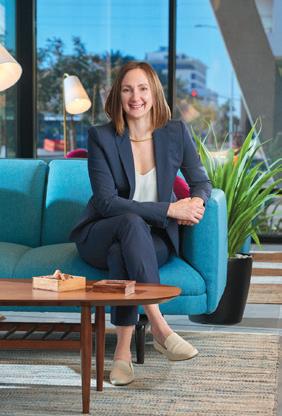
by Ruth Roberts, DVM, CVA, CVH, CVFT, NAN
Originally developed for human medicine, pulsed electromagnetic field (PEMF) therapy is becoming increasingly popular in pet care. A 2018 study published in Research in Veterinary Science found it to be a safe, non-invasive veterinary treatment for bone and wound healing, osteoarthritis, inflammation and post-operative pain.
“Everybody needs electric fields and magnetic fields to function properly,” explains Lori Schmidt, a holistic pet-health coach and certified PEMF practitioner for people, pets and livestock in Newtonville, New Jersey. “PEMF provides these in a concentrated form, helping to recharge cells and restore energy balance.” The therapy stimulates the mitochondria, which are membranebound cell structures that generate most of the chemical energy needed to power the cell’s biochemical reactions, and boosts the production of adenosine triphosphate, the primary source of energy for all living organisms at the cellular level and an essential element for healing.
The frequencies used in PEMF therapy typically range from five to 30 Hertz, which aligns with the body’s natural electromagnetic range. These pulses penetrate tissues, bones and organs, helping to alleviate pain, reduce swelling and promote tissue regeneration. “The energy from PEMF can go up to 16 inches into the body, making it effective even through casts or thick tissues,” Schmidt explains.
PEMF therapy offers a wide range of benefits for dogs.
• Pain Relief: PEMF therapy has been shown to reduce pain and discomfort in dogs with chronic conditions like arthritis. In a 2012 Italian study of dogs with osteoarthritis, 25 dogs were given a session of PEMF every day for 20 days, and 15 dogs in the control group were treated with a non-steroidal, anti-inflammatory drug every day for 20 days. While both groups showed significant improvement in pain relief and mobility during the treatment period, only the PEMF
group sustained the improvements for 12 months.
• Improved Mobility: By reducing inflammation and promoting tissue repair, PEMF therapy helps improve mobility in dogs with joint issues or injuries. “I’ve worked on dogs with tendon and ligament problems, and the results have been impressive, including reduced pain, increased mobility and overall better quality of life,” Schmidt attests.
• Wound Healing: PEMF therapy accelerates the healing of wounds by enhancing blood flow and cellular repair processes.

In a 1998 study published in the American Journal of Veterinary Research involving 12 beagles with sutured wounds, six dogs that were treated with PEMF twice a day beginning on the day before surgery and ending 21 days after surgery showed faster wound closure compared to the other six dogs that received no such treatments.
• Stress and Anxiety Reduction: PEMF therapy has a calming effect on the nervous system, making it beneficial for dogs with anxiety or stress-related behaviors. “PEMF promotes the release of endorphins, which are natural painkillers and mood enhancers,” says Schmidt.

While PEMF therapy offers numerous benefits, it is essential to consult with a veterinarian before starting any new treatment, particularly for dogs with specific health conditions like cancer or heart issues. “PEMF can be a powerful tool for improving quality of life, but it should always be used under the guidance of a qualified professional,” notes Schmidt. “It’s crucial to tailor the treatment to each dog’s condition and to monitor their response carefully.” With the right approach, PEMF therapy may be the key to unlocking better health and well-being for dogs.
Ruth Roberts is an integrative veterinarian and holistic health coach for pets, as well as the creator of The Original CrockPet Diet. Learn more at DrRuthRoberts.com.

Connecting you to the leaders in natural health care and green living in our community. To find out how you can be included in the Business Directory, email PhoenixAds@NaturalAZ.com to request our media kit.
MacKenzie Kalt, Owner/Director 4050 E Greenway Rd, Ste 5, Phoenix 480-594-5052
MyLeadingEdgeWellness.com

Providing some of the most advanced natural technologies for those struggling with chronic pain, injuries, stress, migraine headaches, PTSD, insomnia, Lyme disease, autoimmune disorders, skin conditions, and much more. Visit our website to learn more. See ad, inside front cover.
MEDICINE & DETOX
2701 N 7th St, Phoenix 602-307-0888
NaturalMedicineDetox.com

We offer a wide range of services that can help just about everyone at affordable prices. We also accept insurance for acupuncture, including Medicare. Please take a look at our website to learn about our services, gifted practitioners, and insurance information and form to see if your plan covers acupuncture. See ad, page 16.
NAMASTE BOOKKEEPING
Jen & Mark Arnold
480-442-8208
JandM@NamasteBookkeeping.com

You are passionate about the work you do! It’s not a job; it’s a mission, a calling, a ministry. And it lights you up! There is nothing you would rather be doing. You make a difference! Let us help you so you can help the world!
The table is a meeting place, a gathering ground, the source of sustenance and nourishment, festivity, safety and satisfaction. A person cooking is a person giving: Even the simplest food is a gift.
—Laurie Colwin
ALLY SPINE CENTER
10565 N 114th St, Ste 109, Scottsdale 480-809-4700
asc.drc2000@gmail.com
AllySpineCenter.com

Dr. Chris Condon utilizes stateof-the-art techniques and technologies including non-surgical spinal decompression with the SpineMed and SUMMUS class 4 medical laser for the correction of degenerative spinal conditions including stenosis, herniated/bulging discs and neuropathy as well as knee decompression with the Knee On Trac.
NATURAL DENTAL PARTNERS
6930 E Chauncey Ln, Ste 100, Phoenix 602-775-5120 • MyNaturalDentist.com




The doctors at Natural Dental Partners take the time to listen to your concerns and use their extensive experience to help you achieve better health. Using the latest technology (such as low-dose 3D imaging, CEREC, lasers, PRF, ozone and treatment of sleep disorders), they believe in a team approach to help you achieve your healthcare goals. Check out MyNaturalDentist.com or ABreathOfHealth. com to see how they can help you. See ad, pages 3 and 35.
Dr. Josh Raiffe, DMD, AIAOMT 11111 N Scottsdale Rd, Ste 120, Scottsdale 480-998-3923
SheaDentalAZ.com

Shea Dental offers holistic dentistry led by Dr. Josh Raiffe, DMD, AIAOMT Accredited. Using advanced technology like CEREC milling, digital impressions, Wand anesthesia, cone beam CT scanning, and SMART mercury filling removal, Dr. Raiffe ensures safe dental practices. Services include implants, veneers and sleep apnea treatments. Accepts most dental insurance. See ad, pages 5 and 20-21.
KIM CARTER, MA, HTCP
15215 S 48th St, Ste 154, Phoenix Kim@IntuitiveKim.com IntuitiveKim.com

Kim is an Intuitive and Healing Touch Certified Practitioner offering guidance when you feel out of alignment with your authentic self. Stress, fear, anxiety and grief/loss throw us off balance, making it challenging to access inner wisdom. Sessions include reading and clearing your energy field; and simple, practical selfhealing tools to keep you balanced and grounded. See ad, page 19.
931 E Southern Ave, Ste 106, Mesa 480-306-7321
RealignYourLifeAZ.com

Realign Your Life Wellness Center features the Harmonic Egg—sound and light therapy for physical, emotional and spiritual energy healing. Other services include The Body Code, Life Force Energy with Sound, sound baths and Higher Guidance Life Coaching. See ad, page 16.
480-273-4577
SacredLight777@proton.me
SacredLightCommunity.com

Reclaim your power. Identify your soul purpose. Spiritual healing an d self-realization workshops. Channeled messages from the Divine Creator. Free PastLife Readings. Develop psychic clarity, inner trust, strength and confidence; examine hidden unconscious patterns; and engage in personal power management, karmic healing, calming the mind and dream interpretation.


OSTEOSTRONG
8120 N Hayden Rd, Scottsdale
Text/call 602-932-2792
OsteoStrongScottsdale.com

OsteoStrong is a leader in natural bone health and wellness with centers in Phoenix (Arcadia) and Scottsdale (McCormick Ranch). Our m embers report significant improvements in osteoporosis, physical strength, balance and posture in 15 minutes a week. Specializing in osteogenesis without drugs, we’re dedicated to holistically enhancing quality of life. See ad, page 19.
NORTHWEST EXTERMINATING Organic Program Experts 623-516-2220
NWExterminating.com

We have organic alternatives available with mul tiple programs to meet your needs. Ask us about our year-round pest protection, SMART ecofriendly rodent control 24/7 home protection, and desert guard home sealing service. See ad, page 17.
ANDREA BRIGGS, AKA “CRITTER DOC”
ASAM, Sh Reiki, HTAP Communicator, Healer, Counselor 602-317-1543
1CritterDoc@gmail.com SpiritAnimalWisdom.com

With a gentle healing touch, Andrea provides wellness counseling, energy healing, animal communication, and intuitive counsel for pets and their people.
FENG SHUI REAL ESTATE
Jennie Richau
Associate Broker and Certified Feng Shui Consultant, Brokers Hub Realty 602-292-0622 • WooWooAgent.com

A unique and holistic way to buy or sell! Utilizing Feng Shui and various "woo woo" methods to find you a home where you will thrive or sell your home quickly, for the highest value. See ad, page 33.
SOUTHWEST INSTITUTE OF HEALING ARTS
1538 E Southern Ave, Tempe 480-994-9244
Info@swiha.edu • swiha.edu
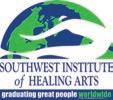
Nationally accredited college offers holistic health and wellness degrees, diplomas, certificates of excellence, continuing education and personal development, oncampus and online. Financial aid available. See ad, outside back cover.
DIMENSIONS OF HEAVEN AND EARTH
11108 N Frank Lloyd Wright Blvd, Ste E16 Scottsdale 732-832-1036 DimensionsOfHeavenAndEarth.com

Dimensions of Heaven and Earth is Scottsdale’s exciting, new one-stop Spiritual Experience: a center of healing and insight combined with a store full of unique gifts from local artisans. With training and tools for your personal development, we are excited to help you take your spiritual journey to new levels! See ad, page 11.

The Path of Spiritual Freedom 1-877-300-4949 • EckankarArizona.org Eckankar.org • HearHU.org Facebook.com/EckankarArizona

Eckankar is an active, individual, creative spiritual practice. A companion and roadmap for your journey home—to the heights of Self-Discovery and GodDiscovery, and beyond. Come along and discover the most secret part of yourself. The key to spiritual freedom lies within you. Explore life as a Soul Adventure. See ad, page 31.
4105 N 20th St, Ste 115, Phoenix 480-442-5020
SummitLighthousePhoenix@gmail.com
SummitLighthousePhoenix.org

Dedicated to sharing Saint Germain’s Violet Flame. All faiths welcome. Learn how you can become a modern day mystic. We are dedicated to sharing the Teachings of the Ascended Masters® to help you bring in joy and peace to the world. Learn what the requirements are to make your ascension. See ad, page 17.



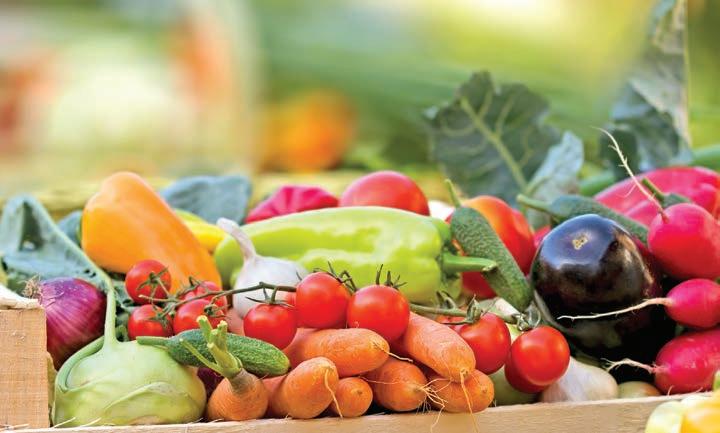
NOTE: Please check market websites and ArizonaCommunityFarmersMarkets.com for more information on days and hours, and any restrictions.
Ahwatukee Farmers Market
4700 E Warner Rd, Phoenix
Sundays Oct-May 9am-1pm Jun-Sep 8am-11am
Facebook.com/AhwatukeeFarmersMarket
Care 1st Farmers Market
328 W Western Ave, Avondale
Tuesdays Jul-Oct 8am-noon ArizonaCommunityFarmersMarkets.com
Carefree Farmers Market
1 Sundial Circle
Fridays Oct-May 9am-1pm Jun-Sep 8am-11am
Facebook.com/CarefreeFarmersMarket
Downtown Chandler Farmers Market
3 S Arizona Ave
Saturdays Oct-May 9am-1pm Jun-Sep 7am-10:30am Facebook.com/ChandlerFarmersMarket
Downtown Mesa Farmers Market
1 E Main St
Saturdays 8am-noon dtMesaFarmersMarket.com
Downtown Phoenix Farmers Market
720 N 5th Street
Saturdays Oct-May 8am-1pm May-Oct 7:30am-11:30am DowntownPhoenixFarmersMarket.org
Gilbert Farmers Market
222 N Ash St
Saturdays Oct-Mar/Apr 8am-noon Apr/May-Sep 7-11am GilbertMarket.com
High Street Farmers Market
5415 E High St, Phoenix
Sundays Oct-May 10am-1pm
Facebook.com/Farmers-Market-on-HighStreet-2244771575799425
Mommas Organic Market
Arrowhead Farmers Market
7780 W Arrowhead Towne Center, Glendale
Saturdays Oct-May 9am-1pm | Jun-Sep 8-11am
Facebook.com/Getlocalazfarmersmarkets GetLocalArizonaEvents.com
Mommas Organic Market
Glendale Farmers Market at Cabela’s 9380 W Glendale Ave, Glendale, AZ 85305
Sundays Sep-May 10am-2pm | closed for summer Facebook.com/Getlocalazfarmersmarkets
GetLocalArizonaEvents.com
Old Town Scottsdale Farmers Market
3806 N Brown Ave
Saturdays 8am-1pm
ArizonaCommunityFarmersMarkets.com
Power Road Farmers Market
4011 S Power Rd, Mesa
Monday-Saturday 9am-5pm | Sunday 9am-4pm PowerrdFarmersMarket.com
Roadrunner Park Farmers Market
3502 E Cactus Rd, Phoenix
Saturdays Oct-May 8am-1pm | Jun-Sep 7-11am
Facebook.com/RoadrunnerParkFarmersMarket
Singh Meadows Farmers Market
1490 E Weber Dr
Fridays, Saturdays & Sundays 8am-2pm Facebook.com/SinghFarms



Sun City Farmers Market 16820 N 99th Ave
Thursdays Oct-May 9am-1pm
Facebook.com/Sun-City-Farmers-Market631299790224049
The Capitol Farmers Market
1700 Adams St, Phoenix Thursdays 10:30am-1:30pm ArizonaCommunityFarmersMarkets.com
Uptown Farmers Market
5757 N Central Ave, Phoenix
Wednesdays Oct-Apr 9am-1pm & May-Jun 8am-noon
Saturdays Nov-Apr 9am-1pm & May-Oct 8am-noon
UptownMarketAZ.com
Verrado Community Farmers Market N Market Pl & W Main St, Buckeye Sundays Oct-Jun 9am-1pm Facebook.com/VerradoCommunityFarmersMarket
Farmers Market in Old Town Square 1042 N Main St, Cottonwood Wednesdays 4-8pm (check months/times throughout year)
Facebook.com/FarmersMarketatOldTownSquare
Flagstaff Community Farmers Market 211 W Aspen Ave, City Hall Parking Lot Sundays May-Oct 8am-noon FlagstaffMarket.com
Prescott Farmers Market
Dignity Health, YRMC 900 Iron Springs Rd, Miller Valley Lot Saturdays 7:30am-noon PrescottFarmersMarket.org
Sedona Community Farmers Market
Wells Fargo Bank Parking Lot 2201 W State Rte 89A, West Sedona Sundays May 14-Oct 15 8am-noon | Sundays Nov 5-Apr 28 11am-3pm Sedona-Farmers-Market.com
Verde Valley Farmers Market Hollamon St and Main St, Camp Verde Saturdays May-Oct 8-11am Facebook.com/VerdeValleyFarmersMarket
Windmill Park Farmers Market 9950 E Cornville Rd, Cornville Thursdays 2-6pm (check months/times throughout year)
Facebook.com/WindmillParkFarmersMarket



